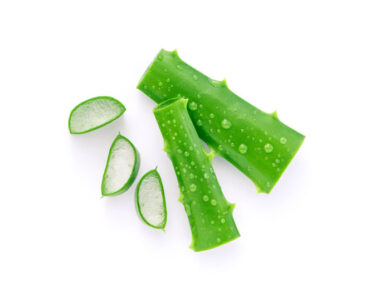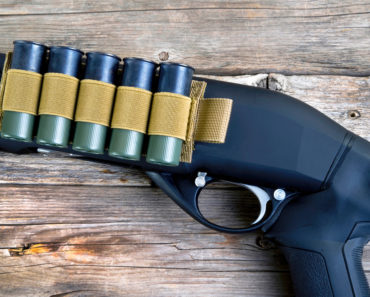Few think of it, but our clothing is an essential part of our continued survival. Of course, modern clothing styles weren’t invented with survival in mind, especially women’s clothing.
No, style is the thing, as our clothes, and the fashion statements we make with them, are a major part of how we express who we are. That’s not something new, as the rich and powerful have always been better dressed, showing the world who they are and how much they have, by the fanciness of the clothes they wear. Gold thread, fancy embroidery and even some dyes used for coloring fabric are all signs of wealth. We may not use those same things in our clothing today, having replaced them with designer labels.
Nevertheless, conveying one’s social status really isn’t the original purpose of clothing; nor, dare I say, is it the most important, even today. Rather, our clothing is the first layer of shelter for our bodies, protecting them from the weather around us.
This may be difficult for some to see, especially if they live in warm climates. The insulating power of our attire may not seem as important when the weather is warm; but even then, our clothes protect us from the weather. If we were all to run around naked in the summertime, we’d see a lot of people with some pretty serious sunburns.
I am constantly amazed by how I see women, especially young women, dressing in the wintertime. Somehow, they think a skirt and sweater, with tights and a short, thin jacket should be enough to keep them warm, even when it’s below freezing. Then they complain about how cold they are.
Okay, so what happens to us when a disaster strikes and we’re caught out in that type of clothing? If we’re out and away from home, even if that means we’re at work or the store, we need that clothing to protect us from the rain, wind and cold. Taking the idea a step further than just trying to get home, let’s say that disaster strikes when we’re hundreds of miles from home and we don’t have anywhere to go. How are we going to survive, with our limited clothing?
Protection from the Cold
The first thing that any of us would naturally be concerned about is protecting ourselves from the cold. Good clothing will do that, but flimsy clothing won’t. But what if that flimsy clothing is all we have?
The first thing to do is dress in layers, even if those are thin, flimsy layers. Insulation comes from trapped air spaces, which create a barrier by forcing the heat or cold to successively warm or cool each layer of trapped air. So, a thin cotton shirt still creates air pockets that the cold has to work through, while our body’s natural heat is warming those layers. Loose clothing works better in this regard, because those trapped layers of air can be thicker. Enough thin layers of clothing will effectively create one thick garment, providing the same warmth that the thicker garment would.
If you don’t have enough layers of clothing, you can always stuff the clothing you have on, with materials that will create those air spaces. Hobos, bums, and street people (they aren’t all the same) have long since learned the value of stuffing their clothing with crumpled up newspapers. Newsprint may not be the best insulation around, but enough of it will create those same sorts of air pockets we need, insulating us.
Of course, newspapers aren’t the only thing that can be used that way. You might have trouble finding enough old newspapers lying around in the middle of the woods. But you will find other materials that can be used, such as leaves. Leaves and other debris found on the forest floor have long been used as insulation in making shelters. That’s the concept behind what is known as a “debris hut.”
More can be done with those leaves than stuffing your clothes; which is a good thing, considering how tight many clothing styles are, especially for women. Leafy branches or pine boughs can be layered over the clothing. Make a rope loop or one of natural materials, to serve as a collar. Then, cut off live branches and hook a “Y” in the branch through the collar, to have it hang over your body. You might look like a walking bush, but you’ll be a warmer walking bush with those branches, than without them.
Of course, animal skins will work to protect us from the cold, once they’ve been properly tanned. But if we’re in such bad shape that we can’t protect ourselves from the cold, I doubt that we’re going to be hunting any big game.
Protection from the Wind
An important part of protecting ourselves from the cold is protecting ourselves from the wind. We’ve all experienced the chilling effect of the wind on a cold day. We might be fine with the cold, as long as there’s no wind; but add that wind chill factor in and it feels like our clothing isn’t helping us at all.
Fortunately, most wind is fairly easy to stop; unless, of course, we’re talking about a hurricane force gale. The same sorts of materials we’re talking about for insulation can be used as a wind break, just as good as donning a nylon “windbreaker” jacket. Newspaper is an effective windbreak, even though it isn’t a strong one. But if you layer it over your clothing, your body provides all the structure it needs to keep it from falling apart. Just make sure there aren’t any loose edges sticking out in a way that the wind can catch them.
Leaves can be even better, especially large leaves. Banana leaves have actually been used for weather protection through large swaths of the world. Unfortunately, we don’t find many banana plants growing in the United States. They need a warmer climate.
Nevertheless, there are plants with large leaves, which grow in more temperate climates. I’ve got a plant called an “elephant ear” growing in my yard, whose leaves typically grow to be two feet across or even larger. I’ve also got a variegated ginger plant, whose leaves can be that long, although they aren’t as broad. Layering the leaves from these sorts of plants, especially if they can be tied in place, is an excellent way of blocking the wind.
Protection from the Rain
Will those same materials protect us from the rain? Well, yes… and no. Newspaper might work to protect us from the rain for a few minutes; but that’s about it. Once the newspaper is wet, it’s going to fall apart.
Leaves will definitely work better as rain protection, if we can fashion some sort of protection out of them. This isn’t actually all that unusual, as there are parts of the world where they make umbrellas out of a bamboo structure, covered with large leaves.
Another thing that’s very common in some parts of the world is to weave umbrellas and even a sort of raincoat out of plant fibers, usually grass. You have to use tall grass for this, as it is the stems of the grass, not the leaf, which is used. It’s amazing just how strong and how waterproof woven grass can be. The conical hats which were historically worn in the Far East are worn both for protection from the sun and protection from the rain. Other cultures have done similar things. I have a woven grass hat from Colombia, which keeps my head dry in the rain.
Don’t Forget Plastic
We shouldn’t forget the most common wind-break to modern man, plastic. We live in a world where we’re surrounded by plastic. Pretty much anyplace you might work will have large plastic bags, much like the lawn and leaf bags you use at home. Those bags might not provide much in the way of insulation; but they’re ideal as a windbreak. Not only that, but they are waterproof.
I always keep some large, and I mean really large, plastic bags around, so that I can use them to make a rain poncho. But those aren’t the only source of plastic I, or anyone else, has available to us. Keeping a couple of cheap plastic tarps (the blue kind) around, in the trunk of the car, at home, in the workplace, wherever, is a great way of providing yourself with some good emergency protection, no matter what.
Typically, we think of these plastic tarps being building material for making a shelter, and they perform admirably for that. But that doesn’t mean we need to limit our thinking. Cutting a hole in the centre for your head turns one of those tarps into a rain poncho. Tie that rain poncho around your waist, and you can stuff the upper part with newspapers or leaves, giving you some insulation to go with the wind and rain protection.
Conclusion
More than anything, coming up with a way to keep yourself warm and dry, even in adverse conditions, like the ones we’re talking about here, is more about using your imagination, than anything else. Look at the materials you have available to work with and set your imagination loose. No prizes will be given for the fanciest costume; the only prize offered is survival, and that prize is given to those who figure out how to overcome their circumstances. Imagination is key to coming up with ways to repurpose whatever materials you have, turning them into something useful for your survival.




























